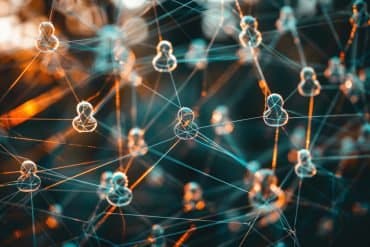Summary: Researchers report people with insomnia showed altered brain activity in areas associated with self awareness and the tendency to ruminate, compared to those who sleep well.
Source: UPMC.
Specific brain regions, including those involved in awareness of self and tendency to ruminate, show altered activity in patients with insomnia when compared to good sleepers, according to a new study by researchers at the University of Pittsburgh School of Medicine published this week in the journal SLEEP.
In what is the largest study of its kind on insomnia, a research group led by Daniel Buysse M.D., professor of psychiatry and clinical and translational science, and the UPMC Professor of Sleep Medicine, University of Pittsburgh School of Medicine, identified differences in brain activity between states of sleep and wakefulness in 44 patients diagnosed with insomnia and 40 good sleepers.
“While patients with insomnia often have their symptoms trivialized by friends, families and even physicians, the findings in this study add strong evidence to the emerging view that insomnia is a condition with neurobiological as well as psychological causes,” said Dr. Buysse, who is the senior author on the study. The study also shows that brain activity during sleep is more nuanced than previously thought, with different brain regions experiencing varying ‘depths’ of sleep.
The findings may help improve current treatments for insomnia such as transcranial magnetic stimulation, and increase understanding of why treatments such as mindfulness meditation are effective in some patients.
Researchers used positron emission tomography (PET) scans during which participants were injected with a solution of glucose molecules tagged with a ‘tracer.’ Brain regions with higher activity took up a proportionally higher amount of the radioactively tagged glucose and were more metabolically active on the PET scans.
Data from the scans revealed relative activity differences in specific brain regions between states of sleep and wakefulness in patients with insomnia and good sleepers. The differences can be attributed to either decreased activity during wakefulness or heightened activity during sleep, the researchers report.

Dysfunction in the brain regions identified in the study may correlate to specific symptoms in patients with insomnia, including impairments in self-awareness and mood, memory deficits and rumination, according to the authors.
Though the study design did not allow authors to discern whether brain activity changes were the cause or consequence of insomnia, the results do indicate that sleep is not uniform across different parts of the brain, contradicting the prevailing view that the entire brain is ‘on’ while awake and ‘off’ while asleep. The study also refines results from an earlier, similar study by researchers at the University of Pittsburgh Sleep Medicine Institute that had fewer participants.
Other study authors include Daniel B. Kay, Ph.D., Helmet T. Karim, B.S., Adriane M. Soehner, Ph.D., Brant P. Hasler, Ph.D., Kristine A. Wilckens, Ph.D., Jeffrey A. James, B.S., Howard J. Aizenstein, M.D., Ph.D., Julie C. Price, Ph.D., Bedda L. Rosario, Ph.D., David J. Kupfer, M.D., Anne Germain, Ph.D., Martica H. Hall, Ph.D., Peter L. Franzen, Ph.D., and Eric A. Nofzinger, M.D., all of the University of Pittsburgh.
Funding: The research was funded by grants through the National Institutes of Health (NIH), including MH024652, MH24652, T32HL082610, T32MH018269, T32MH019986, K01AG049879 and K01DA032557, along with partial support from Sepracor, Inc.
Dr. Nofzinger is on the Board of Directors and is Chief Medical Officer for Cerêve, Inc., and Dr. Buysse is a paid consultant to Cerêve, Inc., Emmi Solutions, and Merck. Dr. Aizenstein has received research support from Novartis Pharmaceuticals.
Source: Arvind Suresh – UPMC
Image Source: NeuroscienceNews.com image is in the public domain.
Original Research: Abstract for “Sleep-Wake Differences in Relative Regional Cerebral Metabolic Rate for Glucose among Patients with Insomnia Compared with Good Sleepers” by Daniel B. Kay, PhD; Helmet T. Karim, BS; Adriane M. Soehner, PhD; Brant P. Hasler, PhD; Kristine A. Wilckens, PhD; Jeffrey A. James, BS; Howard J. Aizenstein, MD, PhD; Julie C. Price, PhD; Bedda L. Rosario, PhD; David J. Kupfer, MD; Anne Germain, PhD; Martica H. Hall, PhD; Peter L. Franzen, PhD; Eric A. Nofzinger, MD; and Daniel J. Buysse, MD in Sleep. Published online October 2116 doi:10.5665/sleep.6154
[cbtabs][cbtab title=”MLA”]UPMC. “Patients With Insomnia Have Altered Activity In Specific Brain Regions.” NeuroscienceNews. NeuroscienceNews, 21 October 2116.
<https://neurosciencenews.com/brain-activity-insomnia-5319/>.[/cbtab][cbtab title=”APA”]UPMC. (2116, October 21). Patients With Insomnia Have Altered Activity In Specific Brain Regions. NeuroscienceNews. Retrieved October 21, 2116 from https://neurosciencenews.com/brain-activity-insomnia-5319/[/cbtab][cbtab title=”Chicago”]UPMC. “Patients With Insomnia Have Altered Activity In Specific Brain Regions.” https://neurosciencenews.com/brain-activity-insomnia-5319/ (accessed October 21, 2116).[/cbtab][/cbtabs]
Abstract
Sleep-Wake Differences in Relative Regional Cerebral Metabolic Rate for Glucose among Patients with Insomnia Compared with Good Sleepers
Study Objectives:
The neurobiological mechanisms of insomnia may involve altered patterns of activation across sleep-wake states in brain regions associated with cognition, self-referential processes, affect, and sleep-wake promotion. The objective of this study was to compare relative regional cerebral metabolic rate for glucose (rCMRglc) in these brain regions across wake and nonrapid eye movement (NREM) sleep states in patients with primary insomnia (PI) and good sleeper controls (GS).
Methods:
Participants included 44 PI and 40 GS matched for age (mean = 37 y old, range 21–60), sex, and race. We conducted [18F]fluoro-2-deoxy-d-glucose positron emission tomography scans in PI and GS during both morning wakefulness and NREM sleep at night. Repeated measures analysis of variance was used to test for group (PI vs. GS) by state (wake vs. NREM sleep) interactions in relative rCMRglc.
Results:
Significant group-by-state interactions in relative rCMRglc were found in the precuneus/posterior cingulate cortex, left middle frontal gyrus, left inferior/superior parietal lobules, left lingual/fusiform/occipital gyri, and right lingual gyrus. All clusters were significant at Pcorrected < 0.05.
Conclusions:
Insomnia was characterized by regional alterations in relative glucose metabolism across NREM sleep and wakefulness. Significant group-by-state interactions in relative rCMRglc suggest that insomnia is associated with impaired disengagement of brain regions involved in cognition (left frontoparietal), self-referential processes (precuneus/posterior cingulate), and affect (left middle frontal, fusiform/lingual gyri) during NREM sleep, or alternatively, to impaired engagement of these regions during wakefulness.
“Defining ADHD symptom persistence in adulthood: optimizing sensitivity and specificity” by Margaret H. Sibley, James M. Swanson, L. Eugene Arnold, Lily T. Hechtman, Elizabeth B. Owens, Annamarie Stehli, Howard Abikoff, Stephen P. Hinshaw, Brooke S. G. Molina, John T. Mitchell, Peter S. Jensen, Andrea L. Howard, Kimberley D. Lakes, William E. Pelham, and for the MTA Cooperative Group in Frontiers in Behavioral Neuroscience. Published online September 19 2116 doi:10.1111/jcpp.12621






